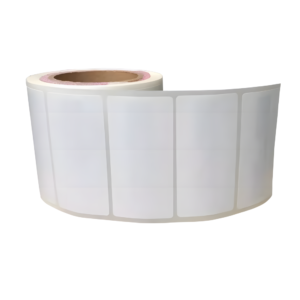What are the pros and cons of using RFID for Inventory Management?
RFID for Inventory Management is used to recognize and discover unique objects, including products and items. The technology is measured by radio waves that interact between a tag on the product and the reader.
In warehouses, distribution centers, and facilities that have deployed automated inventory management technology, barcode labels have become regular operating procedures. But RFID has become a bigger part of the inventory management equation, especially in retail where several big companies are using the tags to track goods at the pallet, case, and even item-level at the retail shelf. While RFID has some big benefits over barcode labels, deciding whether to use the technology in your inventory operations will require weighing the costs and benefits. Below, we’ve outlined some of the pros and cons of using RFID for inventory management.
Features of RFID warehouse management software:
- Product Warehousing: RFID warehouse management software uses production and manufacturing, purchase of all normal warehousing, return and replacement of goods into the warehouse and other different warehousing methods.
- Data Sheets: RIFD warehouse management software can customize the setting of basic information such as product information, raw material information, machinery and equipment information.
- Inventory Transfer: for different libraries in the middle must be transferred, rfid warehouse management software can automatically generate a transfer order number, suitable for different library in the middle of the transfer.
- Dynamic Inquiry: applicable to the inventory list query, the entry and exit list query, the product type query, the inventory query, and the date query.
- Market Sales delivery: According to customer orders, use market sales of goods, customers and other data information, apply for purchase and shipment orders to reduce inventory.
- Warehouse Summary: RFID warehouse management software can summarize the warehouse anytime and anywhere, automatically generate bills, save time and effort in the summary work, when the total amount of inventory is not enough, the mobile phone software automatically warns the information.
- Data Analysis: You can customize the quarterly reports and inventory tables required for statistical analysis, and see at a glance the property and inventory status.
Pros of using RFID
1. RFID tags can be read from any orientation
2. RFID does not require line of sight for scanning. With barcode labels, employees (or fixed position scanners) have to be able to see the label to get a safe scan.
3. RFID also improves the visibility of inventory by providing real-time updates and faster scanning.
4. It increases inventory visibility and helps you cut labor cost. RFID can reduce labor charges. Labor can account for 50% to 80% of expenses in a distribution center.
5. If you are using in-store customer pickup or ship your product from multiple warehouses located in different continents then RFID (Radio Frequency Identification) technology allows you to identify individual products and components and even allows to track it across the supply chain process.
6. If you are connecting to omnichannel consumers then RFID is vital, as you need to have access to accurate inventory level across multiple selling points.
7. For the right items in the right settings, UHF RFID enables stock-take with >95% accuracy an order of magnitude faster than optical bar codes.
8. Using this increased accuracy and addressing stock outs has been shown to drive increased sales of 10%.
9. For companies that use returnable containers or pallets, RFID provides a way to track those items across the supply chain, optimize asset inventory, and reduce loss or theft.
Cons of using RFID
1. RFID is not advisable for small scale retailers as the cost attached to the deployment of this technology is high.
2. In order to implement RFID, you first need to upgrade your existing inventory management system to support a sensitive technology like RFID.
3. RFID tags may also suffer from interference problems. If the tag environment contains a lot of metal, liquids or other sources of radio interference.
4. RFID tags can provide much more traceability data than barcodes, but managing all of that data can be a challenge.
5. There are also still incompatible standards across different industries, tag types, and in different countries.





